What you need to know
The Great Garden Divide: Fencing Made Simple
A Comprehensive Guide to Garden Fencing in the UK
When it comes to enhancing your garden’s privacy, security, and aesthetic appeal, choosing the right fencing is crucial. You have a variety of options to consider. In this guide, we’ll explore different types of fencing, their costs and maintenance requirements, planning permission considerations, and the pros and cons of concrete versus wooden posts.
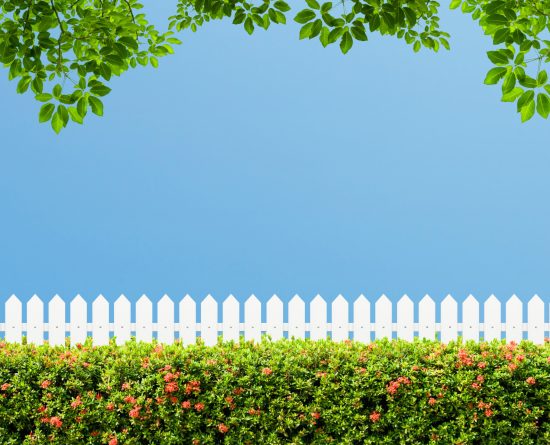
Types of Garden Fencing
Wooden Fencing
Wooden fencing remains a popular choice for UK gardens due to its natural look and versatility. Here are some common types:
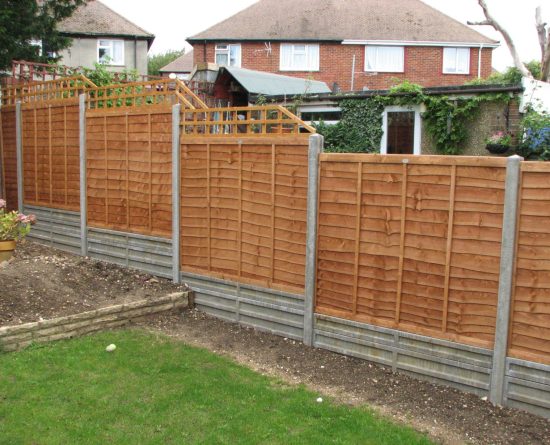
1. Lap Panel Fencing
These overlapping wooden boards provide excellent privacy and wind protection. They’re available in various heights and are relatively affordable.
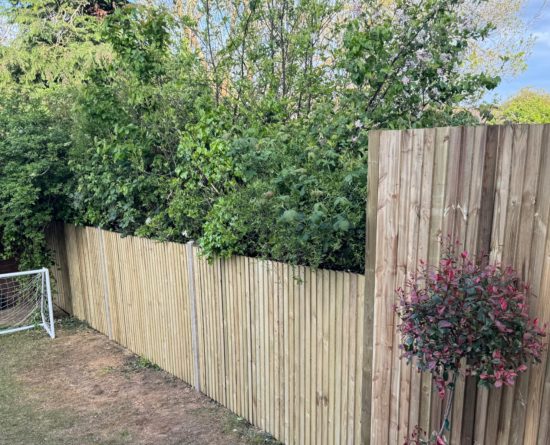
2. Featherboard (Closeboard) Fencing
Also known as arris rail fencing, this type is known for its durability. It consists of vertical wooden boards attached to horizontal rails. It’s excellent for security and privacy but tends to be more expensive than lap panels.
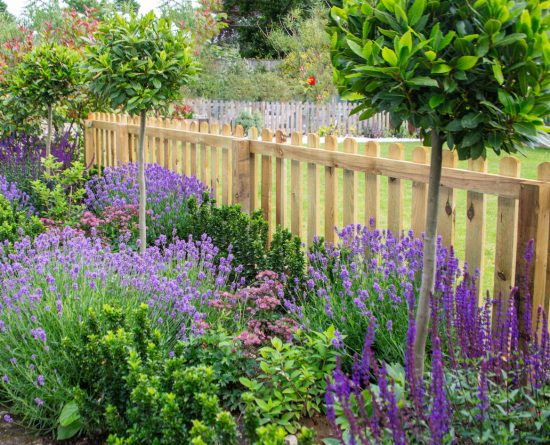
3. Picket Fencing
Perfect for a charming, traditional look, picket fences are ideal for front gardens or as decorative boundaries. They offer less privacy but allow more light through.
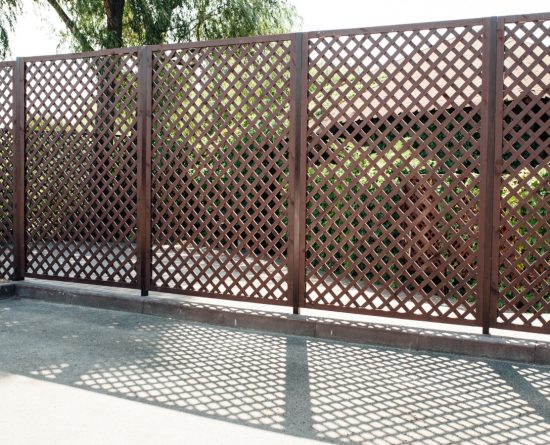
4. Trellis Fencing
These can be used alone or as toppers for solid panels. They’re great for supporting climbing plants and adding a decorative touch to your garden.
Other Fencing Options
While wooden fencing is prevalent, there are other materials to consider. These are generally pricier options, but as well as looking great, they can offer advantages such as lower maintenance and durability.
We’d be happy to advise on or install any type of fencing here. Get in touch!
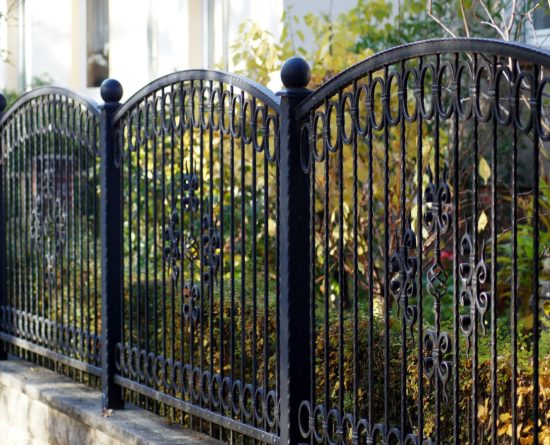
1. Metal Fencing
Metal Fencing: Options like wrought iron or aluminium offer durability and a modern look. They’re low-maintenance but can be more expensive initially.
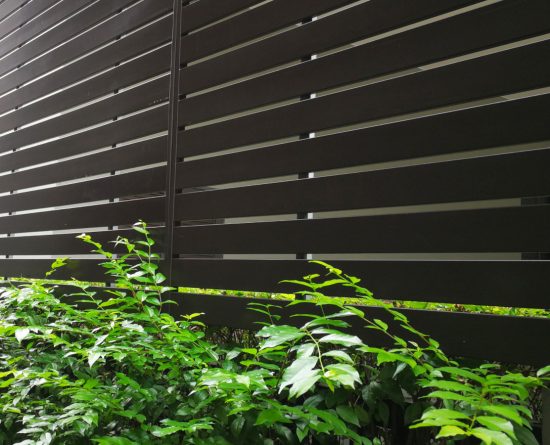
2. Composite Fencing
Composite Fencing: Made from a mix of wood fibres and plastic, these are highly durable and low-maintenance. They can mimic the look of wood without the upkeep.
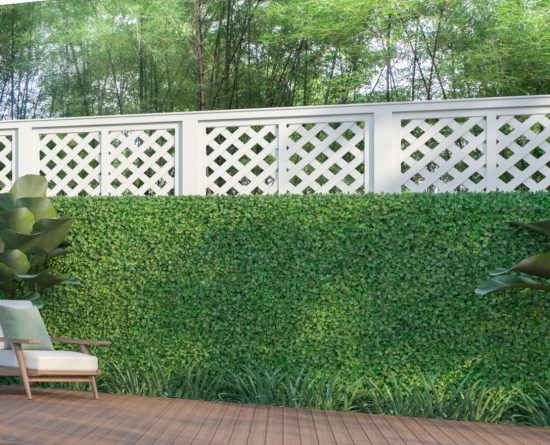
3. Living Fences
Hedges or bamboo can create natural, eco-friendly boundaries. They require more maintenance but can enhance biodiversity in your garden.
Cost Implications and Maintenance
The cost of fencing can vary significantly based on materials, height, and length. Here’s a general overview.
| Fence Type | Cost (per panel) | Maintenance |
| Wooden Fencing | £30-£100 | Regular treatment with wood preservative every 2-3 years |
| Metal Fencing | £50-£150 | Occasional cleaning; may need repainting every 5-10 years |
| Composite Fencing | £80-£200 | Minimal; occasional cleaning |
| Living Fences | Varies widely depending on plant choice and maturity | Regular trimming and care required |
| Note: These prices are estimates and can vary based on your location and specific requirements. Always get quotes from multiple suppliers for an accurate cost assessment. | ||
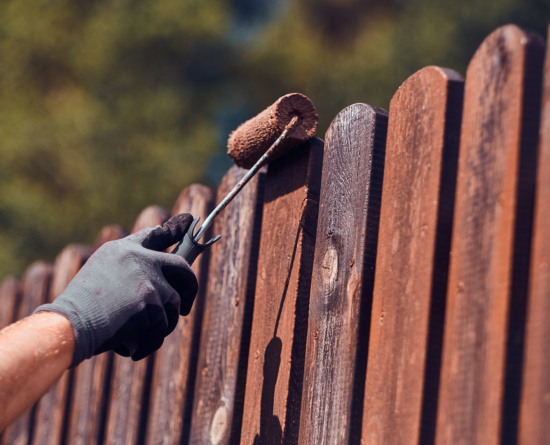
Planning Permission for Fencing
In most cases, garden fencing doesn’t require planning permission in the UK. However, there are exceptions:

- If your property is listed or in a conservation area, you may need permission for any fencing work. Check here to see whether you live in a conservation area.
- Fences, gates, and walls should not be higher than 2 meters (6.56 feet) anywhere on your property.
- If the fence is next to a highway used by vehicles, the height limit is 1 meter (3.28 feet).
- For front garden fences, the limit is usually 1 meter high.
Always check with your local planning authority if you’re unsure, as regulations can vary by location.
Concrete vs Wooden Posts
The choice between concrete and wooden posts can significantly impact your fence’s longevity and appearance:
| Type | Pros | Cons |
|---|---|---|
| Concrete Posts |
|
|
| Wooden Posts |
|
|
For a balance of durability and aesthetics, consider using concrete posts with wooden gravel boards and panels. This combination offers the strength of concrete with the natural look of wood.
Fencing Extras to Consider
When planning your fencing project, consider these additional elements that can enhance the functionality and appearance of your fence:
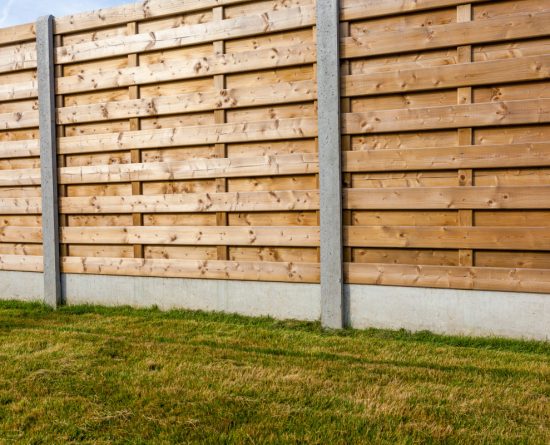
1. Gravel Boards
These are placed at the bottom of the fence, between the ground and the fence panels. They help protect the main fence panels from ground moisture and rot, extending the life of your fence. Available in concrete or wood, they can also add height to your fence.
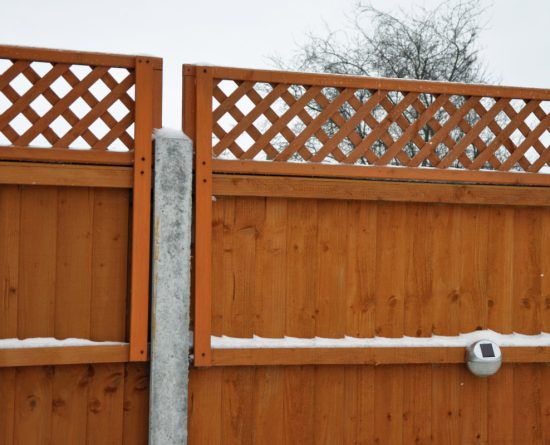
2. Trellis Sections
Adding trellis to the top of your fence panels can increase privacy while allowing light through. They’re also great for supporting climbing plants, adding a decorative element to your garden boundary.
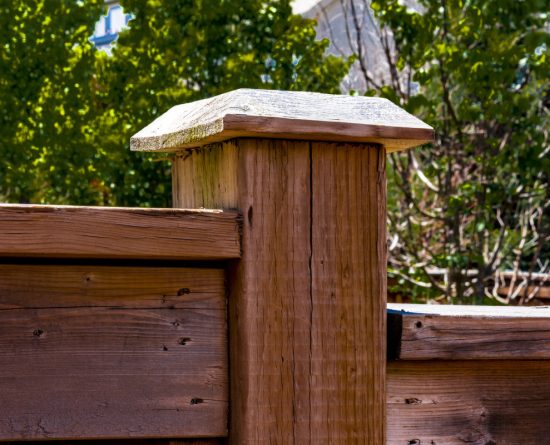
3. Post Caps
These serve both functional and aesthetic purposes. They protect the top of your fence posts from water damage and can add a decorative finish to your fencing. Available in various materials and styles, from simple wooden caps to ornate metal designs.
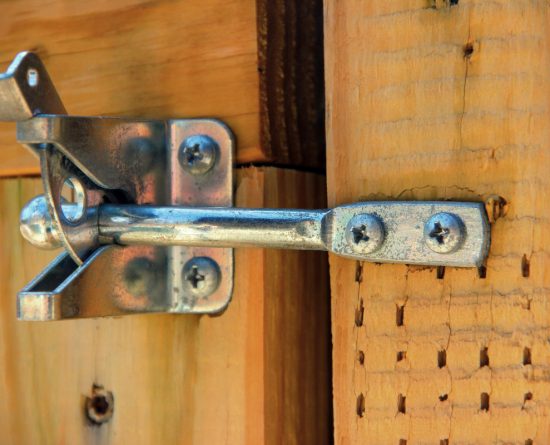
4. Gates and Gate Hardware
Don’t overlook the importance of gates in your fence design. Whether for pedestrian or vehicle access, gates should be sturdy and well-constructed to match the security level of your fence.
Always use quality hinges, latches, and locks for any gates in your fencing. These ensure security and smooth operation.
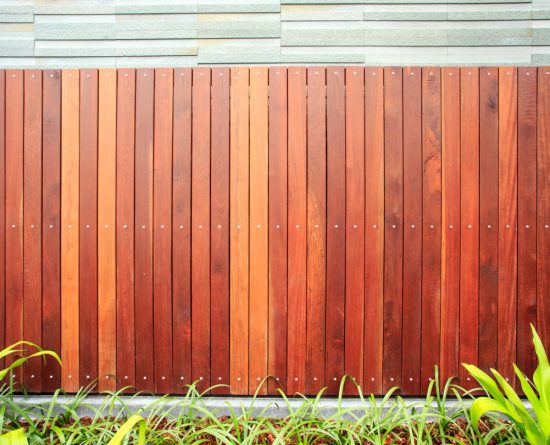
5. Decorative Panels
Consider incorporating some decorative panels into your fencing design. These can break up the monotony of a long fence and add visual interest to your garden.
Adding these extras can significantly enhance the appearance and longevity of your fencing, though they will increase the overall cost of your project. Discuss these options with your fencing supplier or installer to find the best combination for your needs and budget.
Conclusion
The choice between concrete and wooden posts can significantly impact your fence’s longevity and appearance:
Choosing the right fence for your garden involves balancing aesthetics, practicality, and budget. By considering the types of fencing available, understanding the costs and maintenance involved, and being aware of planning regulations, you can make an informed decision that enhances your outdoor space for years to come.
Remember, if you need help with your fencing project, the team at Blue Ladder Building is always here to assist. We can provide expert advice, high-quality materials, and professional installation to ensure your garden fencing meets your needs and exceeds your expectations.
Got Questions? We've Got Answers!
Wooden fence posts are a more cost-effective option compared to concrete posts. When installed correctly, they can provide a beautiful and durable fencing solution that can last for many years. However, it’s important to note that wooden posts will eventually require replacement, typically after around 10 years in average conditions. Concrete posts that are properly installed will last at least 3 times longer. At Blue Ladder, we offer both wooden and concrete post options. We’re more than happy to discuss your specific needs and preferences to help you make the right choice for your project.
We understand the importance of timely fencing repairs and replacements. In most cases, we can schedule your project within a few days, providing prompt service to address your needs. Additionally, we offer an emergency repair service for urgent situations, ensuring your peace of mind.
Yes, we typically supply and install all types of fencing using high-quality materials from trusted suppliers with whom we have a strong track record. However, if you prefer to supply your own fencing materials, simply let us know your preferences, and we’ll provide you with a customised quote based on your specific requirements.
We offer a convenient waste removal service for old fencing materials, typically at a modest additional cost. However, if you prefer to handle the waste removal yourself to save on expenses, you are welcome to do so. We’re here to accommodate your preferences and ensure a hassle-free fencing experience.
